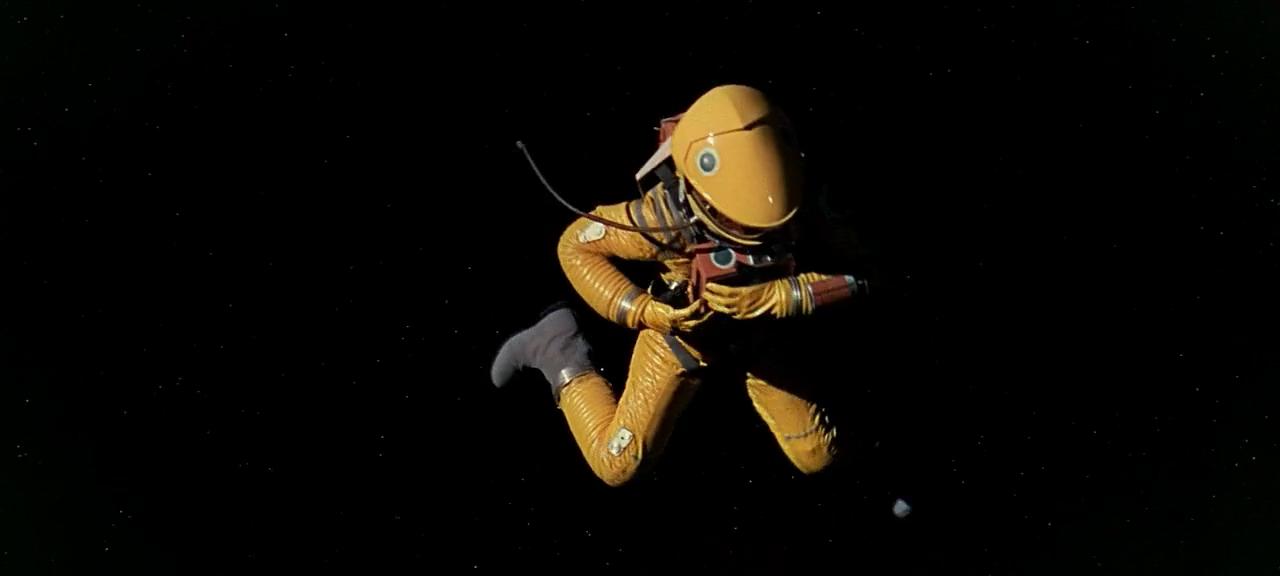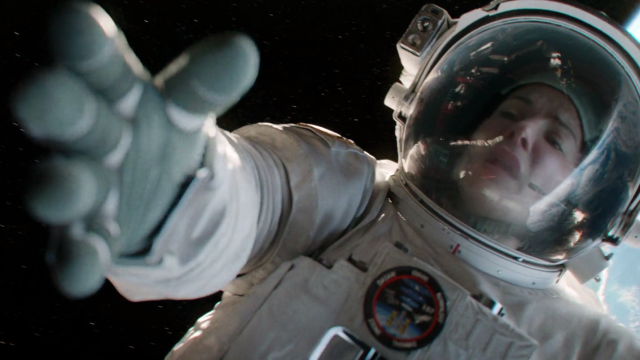Imagine the frightening scenario – dramatised in movies such as Gravity and 2001 – where an astronaut gets sick or disoriented during a spacewalk. Confused, and on the cusp of losing consciousness, she struggles to operate the suit’s jetpack. Unable to get her bearings, and without a tether to keep her secured to the space station, she drifts farther and farther away until all hope is lost.
Screenshot: Heyday Films
Now instead of that scenario, imagine the struggling astronaut presses an emergency button which automatically takes her back to the International Space Station or another space-based habitat. Such a system is currently under development at Draper Labs, and it could soon become a standard feature on spacesuits.
To develop this “take me home” technology, Draper’s engineers had to design a system capable of pinpointing an astronaut’s location relative to the return point, and compute an optimal return trajectory taking time, oxygen consumption, safety and clearance considerations into account. There’s no GPS in orbit, of course, and preventing the astronaut’s head from smashing against a solar panel would probably be a good thing. Fundamentally, the technology needed to be able to guide a disoriented (and possibly unconscious) astronaut back to the awaiting craft. To that end, Draper’s new system is capable of monitoring movement, acceleration and relative position of a spacewalking astronaut to a fixed object, such as the ISS.

This system would have come in real handy for fictional character Frank Poole in 2001: A Space Odyssey. (Screenshot: Metro-Goldwyn-Mayer)
“Giving astronauts a sense of direction and orientation in space is a challenge because there is no gravity and no easy way to determine which way is up and down,” explained Kevin Duda, a space systems engineer at Draper, in a statement. “Our technology improves mission success in space by keeping the crew safe.”
When enabled, the suit’s “take me home” system can operate the jetpack autonomously, or provide the the astronaut with directions using sensors or via the helmet’s visor display. The self-return system can be initiated by the astronaut, the crew onboard the space station, or members of mission control down on Earth.
Duda and his colleagues at Draper only recently filed a patent for the system, so it may be a while before we see functional, space-capable versions. Importantly, however, NASA co-funded this spacesuit project, so there’s a major player interested in its development. That said, this system could be applied to other applications, such as when firefighters are incapacitated by smoke, or scuba divers struggling in the ocean.
[Draper]
